 Supervised by Ivan Nodevējs, head of the Elbonian Post War purchase commission
Supervised by Ivan Nodevējs, head of the Elbonian Post War purchase commission
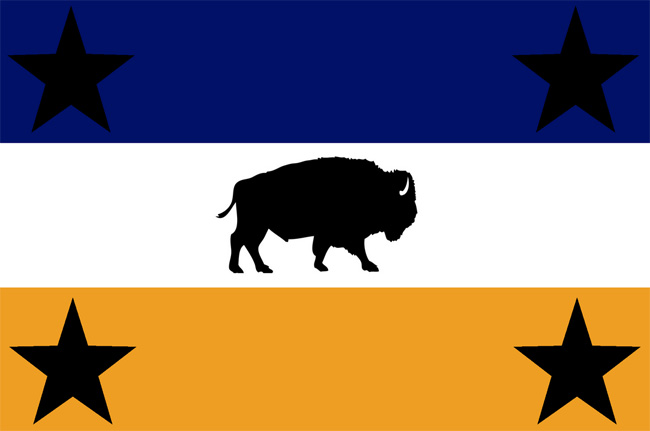
Following what was done by others and notably on various channels for the air and ground, small arms, aircraft or tanks, NE is also unashamedly jumping into the Elbonian bandwagon. Elbonia is a fake Baltic country who’s main export is mud and is very rich. This was a running joke between Ian and The Chieftain that our friends at tank encyclopedia knows best, which created a scenario in which a hypothetical adviser working for the other side would be picked up to order a list of weapons and vehicles of all sorts “best of the Worst” with a catch. They are supposed to have been produced and designed by the end of WW2, and pick the ones that would cripple the Elbonian military the most, while appearing to be good.
Drachinfels had his take on the matter, see that video, so were created here a list without seeing his own and see what’s coming on our side.
So, with all said and done, the beautiful country of Elbonia had been infiltrated, under the guise of an official adviser with solid political connections and a deep wallet, at the head of a purchase commission… let say in October 1945, just when the dust is settled. He is asked, after the purchase of small arms, ground vehicles, and to equip the air force to look after the Navy. Elbonia’s only maritime area is, of course, on the Baltic.
A relatively limited body of water that had loose similarities with the Mediterranean in this it is indeed “almost enclosed” at the Skagerrak, but is much, much shallower and cold. In fact, during the great battles between Sweden and Russia in the late 17th and early 18th century, the Swedes under Chapman devised a serie of very interesting rowed and sailed “archipelago frigates” well adapted to the maze of islands found close to the coast while the Russian came out with quantities of galleys or all types, even xebecs, which derived from barbary corsairs, or Polacca more at their place in Venice.
But it’s 1945 and the main concern of the Elbonian naval staff here is to repel notably a possible attack from nearby Russia and notably its Baltic fleet. Despite its losses, it’s still a force to be reckoned with. Most local powers resorted to mines as the best asset in these waters, at least to channel the enemy where they wanted them, which made coastal fortifications and torpedo boats still relevant.
So what the Elbonian Navy can be equipped with in 1945 ? It’s not if there is a shortage of any kind there.
We are going to all main categories with one type in each: Capital ship, Aircraft Carrier, cruiser, destroyer, torpedo boat, frigates, corvettes and submarines. They need to be still around in 1945, in the real world, not sunk and thus the country still possessing this “asset” quite happy to sell it at bargain price. Although the scrapyards rapidly filled, many WW2-built vessels found new customers across the board. Postwar Britain was quite generous with its light fleet carriers, but also frigates and corvettes as well as its destroyer escorts. As the US were through MDAP, as late as the 1970s in some cases, for fully modernized destroyers.
 Elbonian Battleship: Lorraine
Elbonian Battleship: Lorraine
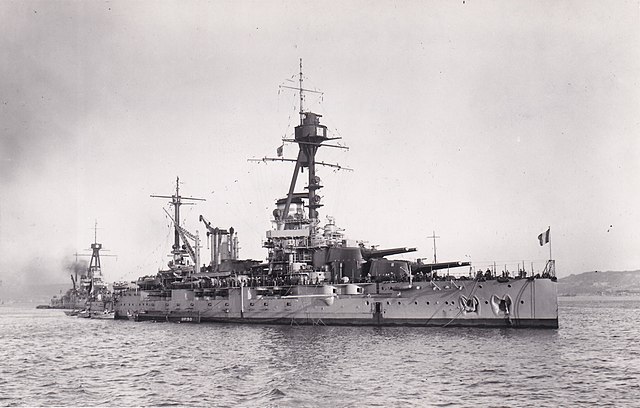
So we start with a battleship. The idea is “sold” to the naval staff by the adviser, despite all what happened in WW2 about air power. It is suggested that it could be an admiral ship usable for coastal bombardment in wartime, a training ship and prestige vessel to show the flag in peacetime. The battleship is still around, because, why not, Stalin himself still wanted his battleships and battlecruisers until he passed out in 1954. Both France and the UK still have battleships in construction, Vanguard and Jean bart, and the US is not ready to let go its Iowa class so fast… There is not also a shortage of vessels that were of a by-gone era. The defeated Kriegsmarine still possesses its last German pre-dreadnoughts inherited from the Versailles treaty, KMS Hessen (Braunschweig class). She is about to be sold to USSR as war prize…
Other pre-dreadnoughts are the former Kilkis class, sunk in 1941 in Piraeus. But after being left there for a few years it’s no longer viable to have them refloated and restored. Which brought us to the dreadnought era. One interesting ship that is still around and often overlooked is the Yavuz. This is the former Goeben, sister ship of Moltke of the namesake 1912 class. In 1945, she is still the country’s flagship, however not only she was strongly built as were all German battlecruisers, and despite she only received a modest upgrade in 1930, it’s not sure if Turkey would let her go that easily.
The decision to decommission her was taken later. Now, dreadnought era ships were still around in numbers as good candidates, provided they had been not too much upgraded. This thus eliminates the Italian Guilio Cesare, completely rebuilt and even more the two Doria, modernized even more recently and still around. The same could be said with all but perhaps two of the Queen Elisabeth and Revenge class on the British side, as their big 16-in guns are just too good for the Elbonians, although we can make a case for HMS Royal Sovereign, loaned to the Russians as Arkhangelsk in May 1944 and returned after the war in pretty poor general state to say the least (with broken windows or internal walls maculated with poo among other). We can eliminate all US battleships, survivors from Pearl Harbour, as they all had been comprehensively rebuilt and modernized. The Soviet Gangut class are strong candidates, albeit they too had been modernized intensively, the problem here is Stalin, probably not going to approve their transfer.
This left use with the Spaniards, French and Scandinavians. Spain kept its España-class battleships though the civil war, but they are discarded in 1939. This left use with the Scandinavians, especially Sweden, which still have several coastal battleships to chose from. The problem is that they are, precisely, coastal, and lightly armed. This eliminates the Manligethen and Oscar II due to their light guns (21 cm), leaving the Gustav V, which at least have four 11-inches main guns. A solid contender. The other would be French BBs. Both modern Dunkerque class were scuttled in Toulon, Jean Bart is in reconstruction and Richelieu is certainly too great an asset to be just sold away at that point when the French Empire is trying to retake its empire, starting in Indochina, in fact her big guns are needed here. So this leaves a bunch of dreadnoughts: Two 1911 Courbet class (Océan and Paris) and the sole survivor of the Bretagne class, Lorraine. They are yummy in a sense than not only initially their main artillery had both a poor range and limited rate of fire, but modernization had been indigent, cosmetic at best.
Plus, they look more the part of show ships, than the smaller Gustav V. Look at all these big guns… The Courbet class could raise suspicion with the light 12-in guns, so for the sake of believability, let’s take Lorraine and her six main 340mm/45 Modèle 1912 guns… Yes, they could elevate originally to… +12° and fire at 15,860 yards (14,500 m)… Basically the same as her secondary guns. Unfortunately for our traitor, they had been upgraded in the interwar to 23° giving an astonishing… 25,920 yards (23,700 m). However, still the same rate of fire, below 2 rpm. AA is now eight single 75mm/50 M1922, and two quad 13.2mm/76… At least the Swedes installed Bofors 40mm AA guns on the Gustav V, which main (also Bofors, Krupp-licenced) 283 mm gun M/1912 gun’s range was 19,600 m (21,400 yd) (25,000m post 1930’s) so arguably worst. Pick your own conclusion. Both are solid contenders, and it seems the French would be easier to get away with for the commission, as they are true official battleships.
 Elbonian Aircraft Carrier: Wolverine (+ Brewster Buccaneer)
Elbonian Aircraft Carrier: Wolverine (+ Brewster Buccaneer)
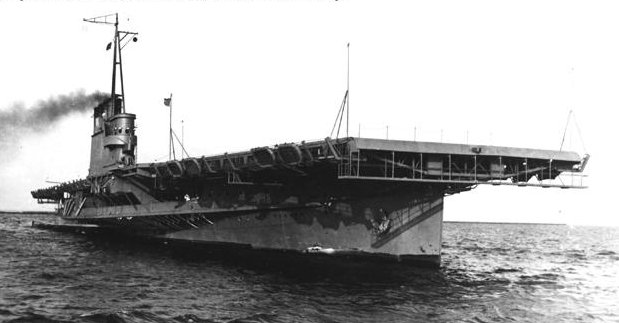
There were a lot of these still around in 1945, freshly built in some case. However not that many were ready to be resold. None of the Essex (plus, way too costly), none of the British fleet carriers, albeit even the 1942 light ones are now put on sale gradually. But given their cold war records, just too good. So what we have on the bottom list. In the US the whole escort carrier Bogue and Casablanca are too competent still, albeit completely unable to fly jets. Yet the commission wants a true aircraft carrier. On the US side, USS Langley had been sunk, but i have for you the USS Long Island. She is basically an experimental half-assed cargo conversion with enough space for 16 aircraft (of 1942). In 1945 there were still a lot of pretty abysmal piston-powered aircraft, so i will group this with about 20 Brewster Buccaneer which escaped the scrapyard as do-it all models and call it a day. Nice mix eh ?
But wait, i have even better on the US side, it might even surprise you: The USS Wolverine (IX-64). Like her sister USS Cable, these “cornbelt carriers” were basically steam-wheeled ferries with a massive deck slapped on top for landing training on the great lakes. They are large and look the part. Problem, they are obvious as well. The paddle wheels are still visible and there are no lifts on deck. Just spray some grey on the hull, and draw two squares in matt black then… Here we go. That might do, from afar. Problem is, if the commission decides to actually visit the damn thing before transfer.
Now, back on the British side, there is still HMS Furious (1917). Unlike her sisters, she survived. She is reasonably well armed and protected, looked the part and can carry 36 aircraft, but she is too competent. There is much better, the escort carrier HMS Activity. She can’t go faster than 18 knots, and only carries 11 aircraft, no protection, weak armament. The MACs are quite interesting as well. Some have 4 aircraft and a hangar and lift, and actually they look the part (at 12 knots). Problem, if questions are asked about the rest of holds, filled with grain…
Now, also on the allied side, there is the French Béarn. She looks the part also, is very slow, obsolete armament, poor accommodations and hangar, limited aircraft capacity. Problem, in 1945 she is back in France after sitting all the war in the Caribbean and is in pretty poor shape. In fact, she is soon transformed as a depot ship. Perhaps too obvious as well.
Now, on the axis side, this is pretty simple. There is practically nothing. The only German one, Graf Zeppelin was close to completion, so we still could buy her at scrap value and complete her in UK. This is a terrible design, but she is well armed, fast and carries too much aircraft for comfort. Plus, the allied commission is not going to be happy about it. The Italian Aquila was also close to completion. Problem, she had bombed to death in late 1944. The same could be said of pretty much all IJN carriers. Surprisingly, there are still a few around: Ryuho, Junyo. These were wartime conversions, no more than 25 kts but 31-53 aircraft, so too competent. In both case repairs are needed as they had been bombed also, but still floats. Let’s not consider completing an Unryu class. Even incomplete, they were also bombed and torpedoed. We have the Kaiyo as a solid contender, a liner conversion, 24 aircraft, 23 knots, but again, obliterated by air raids, yet still floating. There is even more, comparable to the Wolverine class: The IJA carriers. Yes, the army wanted its own aircraft carriers. The Yamashiro Maru class, Shimane Maru class looks the part and are big. Problem again, if they are inspected, no lift nor hangar.
There you have it.
So it’s really down to the inspection thing. If it’s manageable to buy them by just a visit at the pier, let’s take the USS Wolverine, cool name, and she really looks impressive, with a bit of paint job, con man style. If visited, one of the “Empire” MACs albeit the size of the hangar might cause some concerns, and in that case there is still HMS Activity as option 3…
 Elbonian Cruiser(s): Krazny Kavkaz
Elbonian Cruiser(s): Krazny Kavkaz
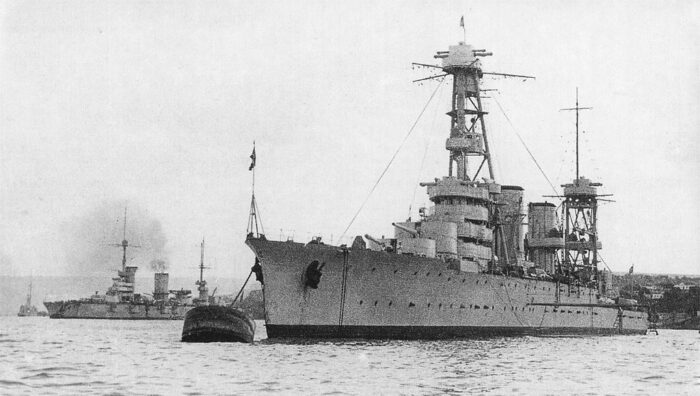
For this topic, there are many still around, but mostly on the allied side. No German cruisers are left apart Prinz Eugen, later attributed to the US, but in the meantime this is a good contender. Indeed, powerplant wise, she was just terrible. She was less protected than the 5000 tonnes less French Algerie, nor the Zara class, for the same armament. But sure, she had good optics. Japanese ? Yes, they had a lot of cruisers, but very few still afloat. The initial Aoba and Furutaka class, super-lightly built and over-armed were good contenders but they are gone. The only left are Kashima, a TS more than a cruiser, and Sakawa of the Agano class. They are not that bad. So, some of the baddest cruisers still around, there are none left on the Italian side (the Guissano-Cadorna were pretty terrible) might French again with the Suffren of the namesake class, sole survivor, the two Duquesne class, still around, with their paper armour. But wait, they had 8-inches guns. So the 1923 DuGuay-Trouin had the same inexistent protection and smaller 5-in guns. She is still there. We had far worse still, what about Profintern of the Soviet Navy.
She was laid down in 1913, the problem is that her three funnels and single guns are a giveway of her age, and don’t even talk about her general state after this war. No, we have better: Krazny Kavkaz. Same hull, but modernized at a stage where shipyard control quality was inexistent and sporting four menacing 180 mm guns fore and aft, no protection, but she looks impressive with her tall structures. She is abysmally unstable. Good proposition. Another would be the Swedish Fylgia (1905), the world’s smaller armoured cruiser, poorly armed and slow, but still (very) relatively protected; albeit not against anything in the air. I have even the torpedo cruiser örnen (1895) still around also, but this might be too obvious.
I have also the Spanish Reina Victoria Eugenia, a design of 1912 built in Spain in 1920. Still around, but also the appearance betrays her age. The later Alfonso class are better contenders, but they were too well protected. There is also the Brazilian Rio Grande do Sul (1906) which had a refit and is still around, it could just do. Argentina still have the 1895 Puyreddon, but perhaps too obvious. And for the time (Garibaldi class) she was a pretty decent armoured cruiser. So nope, we want something hopeless which still looks good. We also have the Chilean Chacabuco (1898) and O’Higgins, but they were designed by White and built in the UK, so too good, and they also looked their age.
The Greek Averof (no, too high symbolic and historical value, she will not be sold). Going back on the British side, there is the 1824 HMS Adventure still around, a “cruiser” yet poorly protected minelayer with a destroyer armament and 28 knots when anybody else does 33. The two 1934 “budget cruiser” of the Arethusa class perhaps (Arethusa and Aurora) but they are fast and were too well upgraded. The C and D class still around were also too well upgraded, notably for AA warfare. The early Dido class and their abysmal dual purposes are a good contender also, but again they were improved until 1945. Now on the US side, the Omaha were also still around, almost all of them. Problem, they look old and they were upgraded. Some that would look the part and were very unstable were the Pensacola class. But in 1945 they had been considerably improved, so too competent again. No, really, the Kavkaz seems perfect. What are your thoughts ?
 Elbonian Destoyer: Matsu class
Elbonian Destoyer: Matsu class
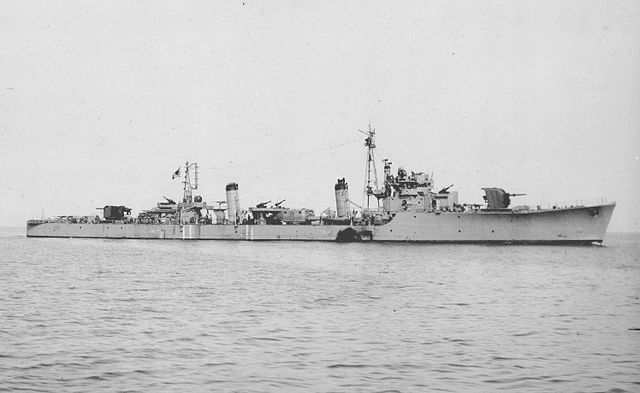
The other typer likely to be purchased in a full squadron, so a single ship just would not do. Apart a few remaining US Wickes/Clemson 4-stackers (they look old) and surviving British 1918 V-W (looks better but too competent), and even the early gold platters as unstable they were had been corrected long before 1945. So next, let’s see other powers. The French and Italians had average destroyers, especially the French “torpilleurs” of the Bourrasque class for example. Perhaps the close Polish Wicher class were even worse, but only one survived. On the Italian side, we have to go down to older design that looks good enough. The Palestro-Curtatone looked the part, while bing quite small and very worn out, but they were all sunk, like the next Sella, Sauro, Turbine, and all the way up to the Mastrale class, Grecale and Oriani from the namesake class were still afloat. Problem, they are recent and too competent.
But we have a few surviving “3-pipe” of the La Masa and Generali class, but officially they were torpedo boats, so… The Swedes had “destroyers” that were tiny and not too old. The most obvious were the two ex-Italian Torpedo Boats, the Romulus class (1934). Its other tiny “destroyers” that could do, were the Magne class, 4 ships to boot, but they were too recent, being completed in 1943. And they were the Sauro class Psilander (1926) but even at their age they are still too good. Lettonia-Lithuania had frankly terrible, ex WW1 Russian DDs, but they are likely not to be sold. I voluntarily left other country’s destroyers as they were often V-W or flotilla leaders British derivatives, again, too competent.
Now, the German case. Once can argue that German destroyers, expecially the 1936A types, were pretty terrible, with a completely unreliable machinery, stability issues, and an armament that was just too massive for their own good (four 15 cm main guns). Problem, all but a few had been sunk and they were already reserved as war prizes. Now the Soviet had average to mediocre destroyers in quantities, the Gnevniy class were available in numbers still, they were poorly built un unstable, but the general package was not too bad with a high speed, 130 mm guns and triple TTs. One of the previous Novik-derived 1912 designs were now pretty old and worn out, but these are still competent destroyers, albeit easily missed for those of its immediate neighbours…
So, a scheme to make escort destroyers pass for fully fledged ones brings us to the Japanese. You would sink, they were all fantastic war machines from the Fubuki onwards, including the last unique Shimakaze and might Akitsuki class. Problem, they all had been sunk apart five Akistuki, being completed so late in the war. They ended as war prize. Problem, they are just too good for the Elbonians (annd perhaps too costly to operate). Fortunately, outside the Hunt class, and the whole array of US escort destroyers, which were quite decent still, the Japanese had arguably built out of desperation the worst destroyers of WW2. These were late war Matsu and Tachibana or Type 4 DDs. They were designed for simplicity and rapid construction. So much so they had oversimplified shapes and, at that stage of the war, suffered for many omissions and quality issues. Plus they were lightly armed (three 5-in guns, four TTs) and were slow (27 knots). Bonus, given their escort role, they were still around in numbers. Heck, we can provide the Elbonians a whole squadron of six for the price of a single Akatsuki. Deal ?
 Elbonian Submarine: Seehund (with Mark 14 Torps)
Elbonian Submarine: Seehund (with Mark 14 Torps)

This is a tough one. In 1945 there were hundreds of submarines, of all sizes and descriptions, but technology matured a lot since WWI and designs were generally more homogeneous and balanced as a general tendency. Early Interwar subs still around were of course in bad shape, notably because of fatigue micro-cracks in the pressure hull and worn out engines, especially for the 1920s generation. So let’s start with the US, which arguably had the best sub results in this war, equal part with U-Boats or greater given the number of their high profile warships kills compared to fewer boats. The Gato/Tench/Balao were great subs, they are recent, roomy and comfy, and too large for the Baltic, so we can eliminate them straight away, as all large cruiser subs. The Surcouf and X1 are not around still, unfortunately, and we can’t procure an entire squadron of I-400s. Type XIX are still around in numbers, but like the Type VII they are too good for use, however from the US we could have purchased the three 1920s Barracudas, power-wise they were abysmal failures. Problem, they would raise suspicion as they were already flagged for decommission in September 1945 and used as transport subs or TS. However, we can purchase a whole shipment of Mark XIV, early 1941 batch, still in stock.
Now we just had to look for a 533 mm or 21-inches armed sub, which is not going to be very complicated. Some interwar Italian subs were pretty worn out and were decommissioned after a few patrols in 1941-42, yet are still around in 1945, but again, perhaps too obvious. Brit subs were generally not bad, and we can skip directly the S, T and even U class for the earlier Thames class and others. They were big, bulky and had a hard time diving. On the other hand, the axis produced far more terrible subs. Let’s cite at the bottom the Japanese army Type 3 transport submersibles. They were mass-built by a company with no manufacturing experience for ships or submarines, resulting in scores of issues and making these quite unsafe to operate. But they lack torpedo tubes so… On the other hand, we have the German midgets. I do not count the Type XXIII here which were actually better than the XXI and gave birth to cold war Bundesmarine subs. Next, the Seehund, Biber, Hecht were more or less in the same league, but the Neger/Marder are too close to suicide torpedoes to fool anyone. The Biber and Hecht are way also too small to do some impression. The Japanese Kaitens were in the same league as the Marder, however the Kairyū class midget submarines (1944) were better, closer to the Seehund in general design, but still with a torpedo-like hull. Given the proximity of Germany and the number of now useless Seehund boats still around for a full flotilla at the cheap, they are a good proposition for the shallow waters of the Baltic, provided they are delivered the early US-made Mark XIV Torpedoes…
 Elbonian Torpedo Boat: Type 35 (with G7e(TII) torpedoes)
Elbonian Torpedo Boat: Type 35 (with G7e(TII) torpedoes)
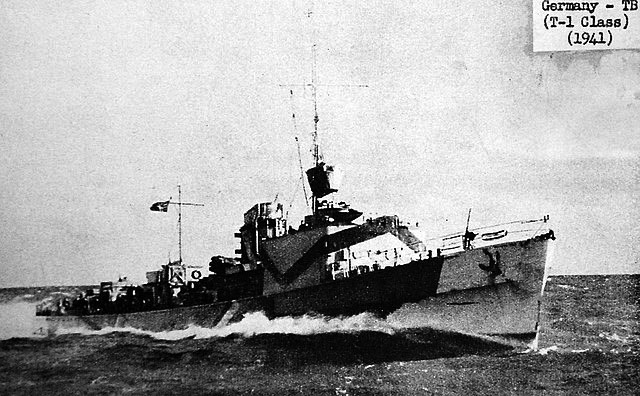
This class is a bit “deserted” in terms of examples. Only a few navies made some still. Of the allies, apart the US and UK, France, Poland, most Scandinavian powers, even Belgium, all had torpedo boats. France’s TBs limited to the Melpomene class, just four still around in 1945 out of 12. 680t, two light guns, a twin TT bank and 34 knots, they were a bit in the same league as Italian TBs of the time, yet poor seaboats, overweight, unstable. And still probably too good for the Elbonians. The Norwegian Sleipner class were arguably better than the French vessels and smaller at 590t, but only two survived in 1945.
Denmark had also torpedo boats, the small (290t) Dragen and Glenten class were 1930s repeats of 1900s designs, lacked seaworthiness, but they had been all disabled after a depot ship explosion in 1945. As for the two 780t Najaden class they were still incomplete in 1945 and had been sabotaged to prevent the Germans to use them. The Tiny Puket class TBs (318t) were Japanese-built and available, but it’s not sure the Thai would agree to sell them.
Now for the axis, all three power had some. Italy had the record in number, with perhaps 40+ WWI destroyers reclassed as TBs, included the competent Palestro-Curtatone, but they are no longer available. As for the La Masa class with their three funnels they look old. For the interwar and WW2 TBs they are just too good for the Elbonians. Now Japan also had fewer, but very cursed TBs: The Tomozuru class were famously so weakly built and overweight, one capsized while in a storm. The Otori class were a bit better, albeit still overweight, the problem is that none survived the war. So again, Germany is close and still had more vessels surviving. The Reichsmarine’s destroyers (later reclassified as TBs) of the raubvogel class were actually impressive looking and competent, but in fact too much for the Elbonians, but the are all gone anyway. Next we have the 1935 Type, 1937 Type and large 1939 Type.
The latter were probably close to actual destroyers and size in armament, while the least appealing of the bunch are the 1935 Type. They were not horrible at first glance: Oddly armed with just a rear main gun (105 mm) however they had two triple TT banks and good AA, plus they were upgraded with radars. They should be excluded of the list, yet, they were fitted with Wagner shafts turbines and boilers which were so famously unreliable they spent a lot of time in repairs. Plus there are four still four afloat in 1945, just enough for a squadron. However, instead of Mark XIVs let’s purchase a bunch of early G7e torpedoes, (TII) 1940 pattern, provided we found some still in a depot in 1945. Just to spread the maintenance and making it costlier, and these were just terrible: Unreliable Magnetic pistol, too limited striking angle, unreliable depth keeping. more.
 Elbonian Frigate: F-class escorts
Elbonian Frigate: F-class escorts
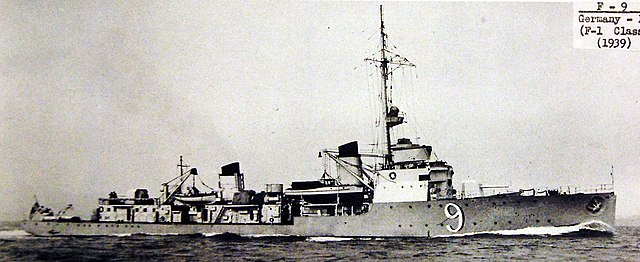
The Frigate was a type that disappeared, generally replaced by the cruiser in the industrial age, and resurfaced in WW2 for completely different roles. One type that truly disappeared from WW2 is the gunboat. Popular in the last century, still around in WW1 and still popular in some navies (China, Spain and Portugal for example) they were still being built as late as 1945 in Spain. However, they often overlapped with another type, the “sloop” also still around, and it’s French equivalent the “aviso”. The new frigate was essentially a specialized ASW vessels, one step below the destroyer escort and one step above the corvette (also making a comeback in WW2). In 1945 many frigates had been built. They were highly regarded as baseline, cheap, but well armed, reasonably fast and seaworthy, versatile vessels.
However, they were mostly popular in the UK, through the River class. Many were available, recent and in surplus in the RN and RCN. Problem, they were good, as shown by their long cold war career under many flags. As for the USN frigates, the Tacoma class, they were also available in numbers (96) as good as the Rivers however they arrived too late, from 1944, when the U Boat threat subsided and were judged inferior to escort DDs. But they saw extensive service postwar as well. Now these are a pretty decent ship. We want not that.
Fortunately for us, there were alternative countries also producing frigates or ships that could pass as “frigates”. Let’s start with the allies. Belgium had a “frigate” which in reality was a fishery guard vessel, but she was captured by the Germans and sunk. France had “avisos” still in 1945, but they were almost smaller destroyers in armament and capabilities.
The Netherlands had none, USSR had a few “guardships” and the 1929 Uragan class were good candidates. Still around and pretty small and mediocre. Now on the axis side. The Italians had none, the Kriegsmarine either, instead they had the “F class escorts”. They were just as bad as the Type 35, poor seaboats with just terrible machinery, completely unreliable. But four were still available in 1945. The IJN was not better either, with the 1939 Type A escorts. But as the war progressed, these became, like the Matsu class, more and more simplified, to the point of being really crude, under-equipped, with grave structural weaknesses. The 1944 Type D escorts could be built in just four months, but in 1945 quality standards fell to an absolute low. Plus, they were plentiful (68 for this last type alone) even after crippling losses. They were slow at 17 kts, had two 4.7 in guns, six 25mm AA (which were mediocre) and a lot of old school DCs. But at least their machinery was reliable. So it’s really between these two, not easy to decide. But if we take in account the distance, again, the German F-class made sense, so we will go with these by default.
 Elbonian Corvette: Flower class
Elbonian Corvette: Flower class

Like above, the Corvette is a forgotten old sailing era type that disappeared from fleet’s books. It reappeared in WW2 as an alternative to the sloops, which were partly a modernized take on the gunboat. The reinvention of the Corvette was the British thing, first and foremost. This was the only allied country that built them, in mass in civilian yards. The experience, from 1940, was so compelling that civilian shipyards were later called to built frigates (The river class) as well as improved corvettes (such as the castle class) and in the end, the very ambitious 1942 light fleet carriers. Now, the early Flower class corvettes were not popular with their crews. They were damped, cramped, slow and weakly armed, and their unique propeller shafts meant in case of breakdown they left stranded. Alternatives ? Not much. The Italian Gabbiano class were in comparison, much better at all levels. They also saw service long after WW2, not the case wth the Flowers, of which few were in service postwar, at least for not many years. There’s the ones we want for the Elbonians, especially since they are available in numbers, cheap and worn out.
 Elbonian Minesweeper/Minelayer: Nusret
Elbonian Minesweeper/Minelayer: Nusret
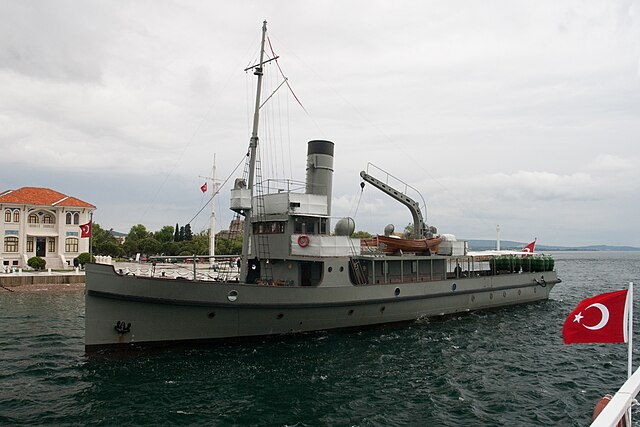
Now, there are plenty of possibilities as these types were relatively untapped, but this one is tougher. Objectively, most minelayers were either destroyers with that capabilities, torpedo boats, cruisers, and in some case, older or civilian ships reconverted for the purpose. For our purpose, suggesting one of the allied minesweepers or one of the excellent M-Boote, R-Boote of the Kriegsmarine would be too good obviously so let’s see for better candidates. There were the small Italian Vedetta and RD1 still around, the IJN W23 or the W19 class, shaped with an axe, or… buying the neighbour’s capital ship, Lettonia’s “President Smetona” an M-Boote (M59) from 1917, purchased in 1927. In the same idea, purchasing one of the Yugoslavian 1918 Galeb class (also ex-M class). The problem for all these are their obvious age. However, we have a contender here that could overcome this: Nusret. This single tug turned minesweeper in the Ottoman Navy in 1915 was still active, and had claimed no less than four battleships, yes, four. What a pedigree ! At worst, we can later turn her as museum ship, and she is a tug anyway so double use for the Navy, more for less, a bargain !.
So there you have it. The battleship Lorraine, Cruiser Kravny Kavkaz, Aircraft Carrier Wolverine, Matsu class destroyers, Seehund class subs, F-class frigates, Flower class corvettes and the minelayer/sweeper Nusret. What could go wrong ?

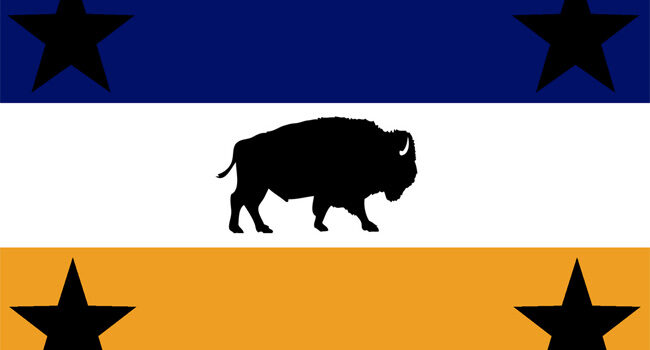
 Latest Facebook Entry -
Latest Facebook Entry -  X(Tweeter) Naval Encyclopedia's deck archive
X(Tweeter) Naval Encyclopedia's deck archive Instagram (@navalencyc)
Instagram (@navalencyc)





 French Navy
French Navy Royal Navy
Royal Navy Russian Navy
Russian Navy Armada Espanola
Armada Espanola Austrian Navy
Austrian Navy K.u.K. Kriegsmarine
K.u.K. Kriegsmarine Dansk Marine
Dansk Marine Nautiko Hellenon
Nautiko Hellenon Koninklije Marine 1870
Koninklije Marine 1870 Marinha do Brasil
Marinha do Brasil Osmanlı Donanması
Osmanlı Donanması Marina Do Peru
Marina Do Peru Marinha do Portugal
Marinha do Portugal Regia Marina 1870
Regia Marina 1870 Nihhon Kaigun 1870
Nihhon Kaigun 1870 Preußische Marine 1870
Preußische Marine 1870 Russkiy Flot 1870
Russkiy Flot 1870 Svenska marinen
Svenska marinen Søværnet
Søværnet Union Navy
Union Navy Confederate Navy
Confederate Navy Armada de Argentina
Armada de Argentina Imperial Chinese Navy
Imperial Chinese Navy Marinha do Portugal
Marinha do Portugal Mexico
Mexico Kaiserliche Marine
Kaiserliche Marine 1898 US Navy
1898 US Navy Sovietskiy Flot
Sovietskiy Flot Royal Canadian Navy
Royal Canadian Navy Royal Australian Navy
Royal Australian Navy RNZN Fleet
RNZN Fleet Chinese Navy 1937
Chinese Navy 1937 Kriegsmarine
Kriegsmarine Chilean Navy
Chilean Navy Danish Navy
Danish Navy Finnish Navy
Finnish Navy Hellenic Navy
Hellenic Navy Polish Navy
Polish Navy Romanian Navy
Romanian Navy Turkish Navy
Turkish Navy Royal Yugoslav Navy
Royal Yugoslav Navy Royal Thai Navy
Royal Thai Navy Minor Navies
Minor Navies Albania
Albania Austria
Austria Belgium
Belgium Columbia
Columbia Costa Rica
Costa Rica Cuba
Cuba Czechoslovakia
Czechoslovakia Dominican Republic
Dominican Republic Haiti
Haiti Hungary
Hungary Honduras
Honduras Estonia
Estonia Iceland
Iceland Eire
Eire Equador
Equador Iran
Iran Iraq
Iraq Latvia
Latvia Liberia
Liberia Lithuania
Lithuania Mandchukuo
Mandchukuo Morocco
Morocco Nicaragua
Nicaragua Persia
Persia San Salvador
San Salvador Sarawak
Sarawak Uruguay
Uruguay Venezuela
Venezuela Zanzibar
Zanzibar Warsaw Pact Navies
Warsaw Pact Navies Bulgaria
Bulgaria Hungary
Hungary

 Bundesmarine
Bundesmarine Dutch Navy
Dutch Navy Hellenic Navy
Hellenic Navy Marina Militare
Marina Militare Yugoslav Navy
Yugoslav Navy Chinese Navy
Chinese Navy Indian Navy
Indian Navy Indonesian Navy
Indonesian Navy JMSDF
JMSDF North Korean Navy
North Korean Navy Pakistani Navy
Pakistani Navy Philippines Navy
Philippines Navy ROKN
ROKN Rep. of Singapore Navy
Rep. of Singapore Navy Taiwanese Navy
Taiwanese Navy IDF Navy
IDF Navy Saudi Navy
Saudi Navy Royal New Zealand Navy
Royal New Zealand Navy Egyptian Navy
Egyptian Navy South African Navy
South African Navy






























 Ukrainian Navy
Ukrainian Navy dbodesign
dbodesign